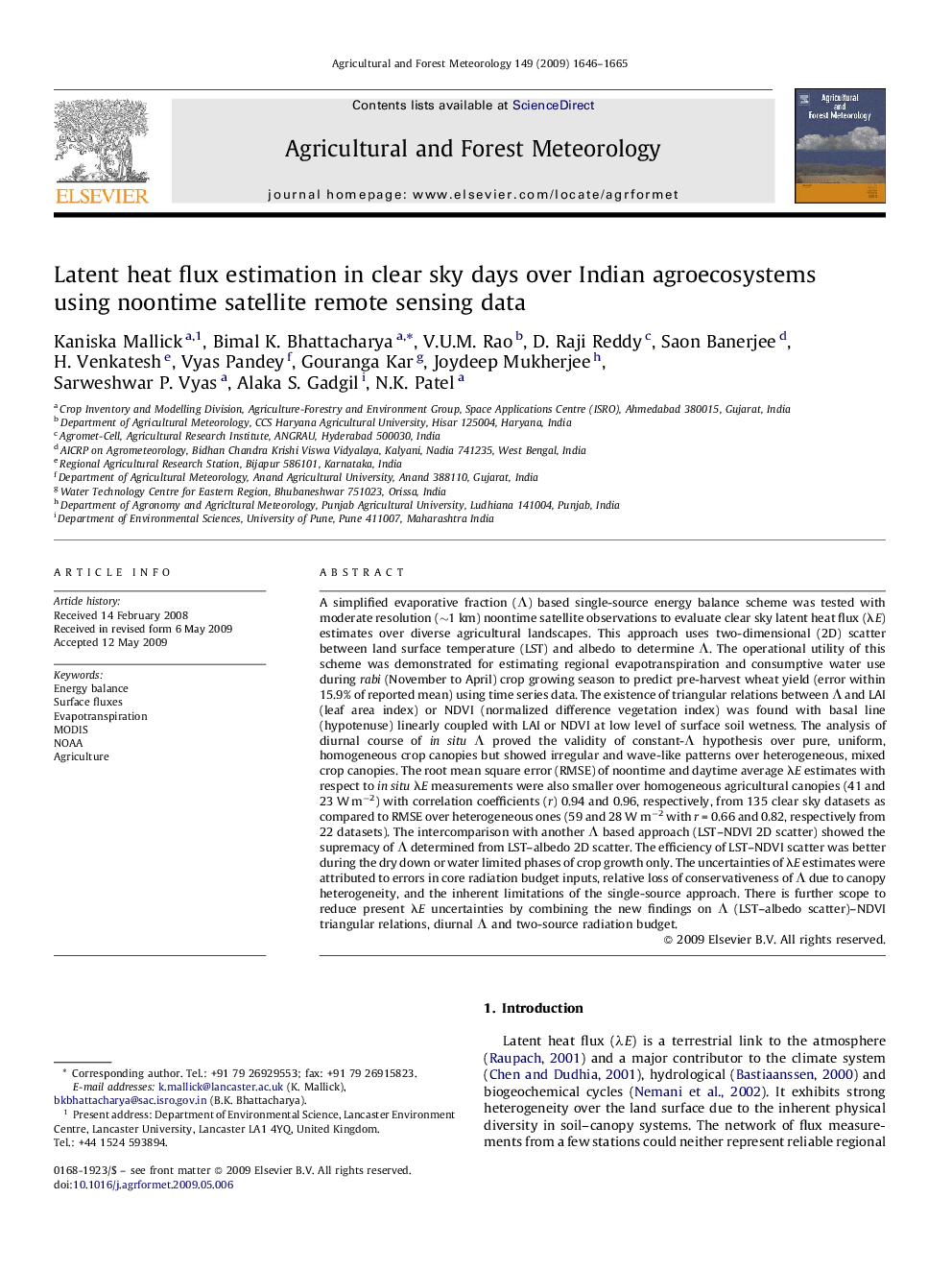| کد مقاله | کد نشریه | سال انتشار | مقاله انگلیسی | نسخه تمام متن |
|---|---|---|---|---|
| 82618 | 158405 | 2009 | 20 صفحه PDF | دانلود رایگان |

A simplified evaporative fraction (Λ) based single-source energy balance scheme was tested with moderate resolution (∼1 km) noontime satellite observations to evaluate clear sky latent heat flux (λE) estimates over diverse agricultural landscapes. This approach uses two-dimensional (2D) scatter between land surface temperature (LST) and albedo to determine Λ. The operational utility of this scheme was demonstrated for estimating regional evapotranspiration and consumptive water use during rabi (November to April) crop growing season to predict pre-harvest wheat yield (error within 15.9% of reported mean) using time series data. The existence of triangular relations between Λ and LAI (leaf area index) or NDVI (normalized difference vegetation index) was found with basal line (hypotenuse) linearly coupled with LAI or NDVI at low level of surface soil wetness. The analysis of diurnal course of in situΛ proved the validity of constant-Λ hypothesis over pure, uniform, homogeneous crop canopies but showed irregular and wave-like patterns over heterogeneous, mixed crop canopies. The root mean square error (RMSE) of noontime and daytime average λE estimates with respect to in situ λE measurements were also smaller over homogeneous agricultural canopies (41 and 23 W m−2) with correlation coefficients (r) 0.94 and 0.96, respectively, from 135 clear sky datasets as compared to RMSE over heterogeneous ones (59 and 28 W m−2 with r = 0.66 and 0.82, respectively from 22 datasets). The intercomparison with another Λ based approach (LST–NDVI 2D scatter) showed the supremacy of Λ determined from LST–albedo 2D scatter. The efficiency of LST–NDVI scatter was better during the dry down or water limited phases of crop growth only. The uncertainties of λE estimates were attributed to errors in core radiation budget inputs, relative loss of conservativeness of Λ due to canopy heterogeneity, and the inherent limitations of the single-source approach. There is further scope to reduce present λE uncertainties by combining the new findings on Λ (LST–albedo scatter)–NDVI triangular relations, diurnal Λ and two-source radiation budget.
Journal: Agricultural and Forest Meteorology - Volume 149, Issue 10, 1 October 2009, Pages 1646–1665